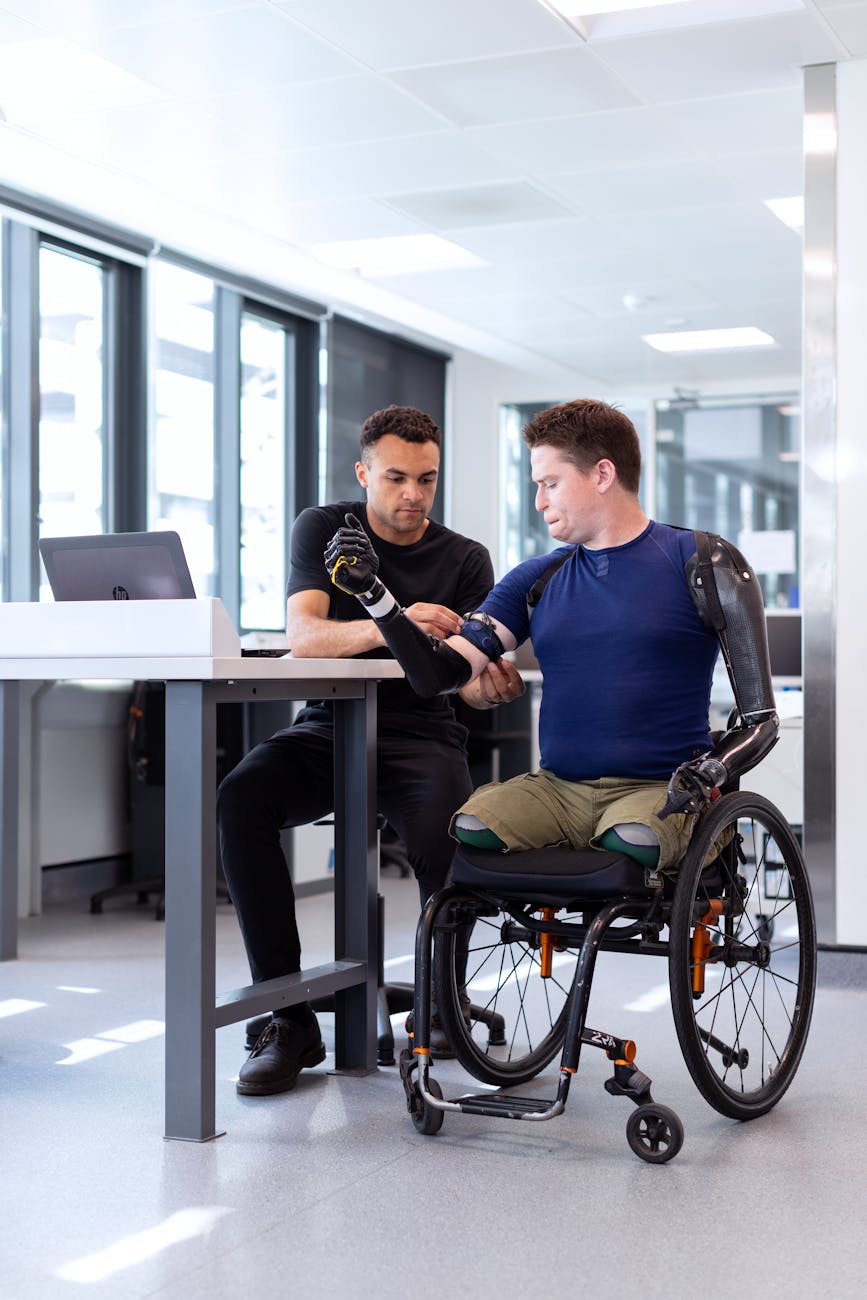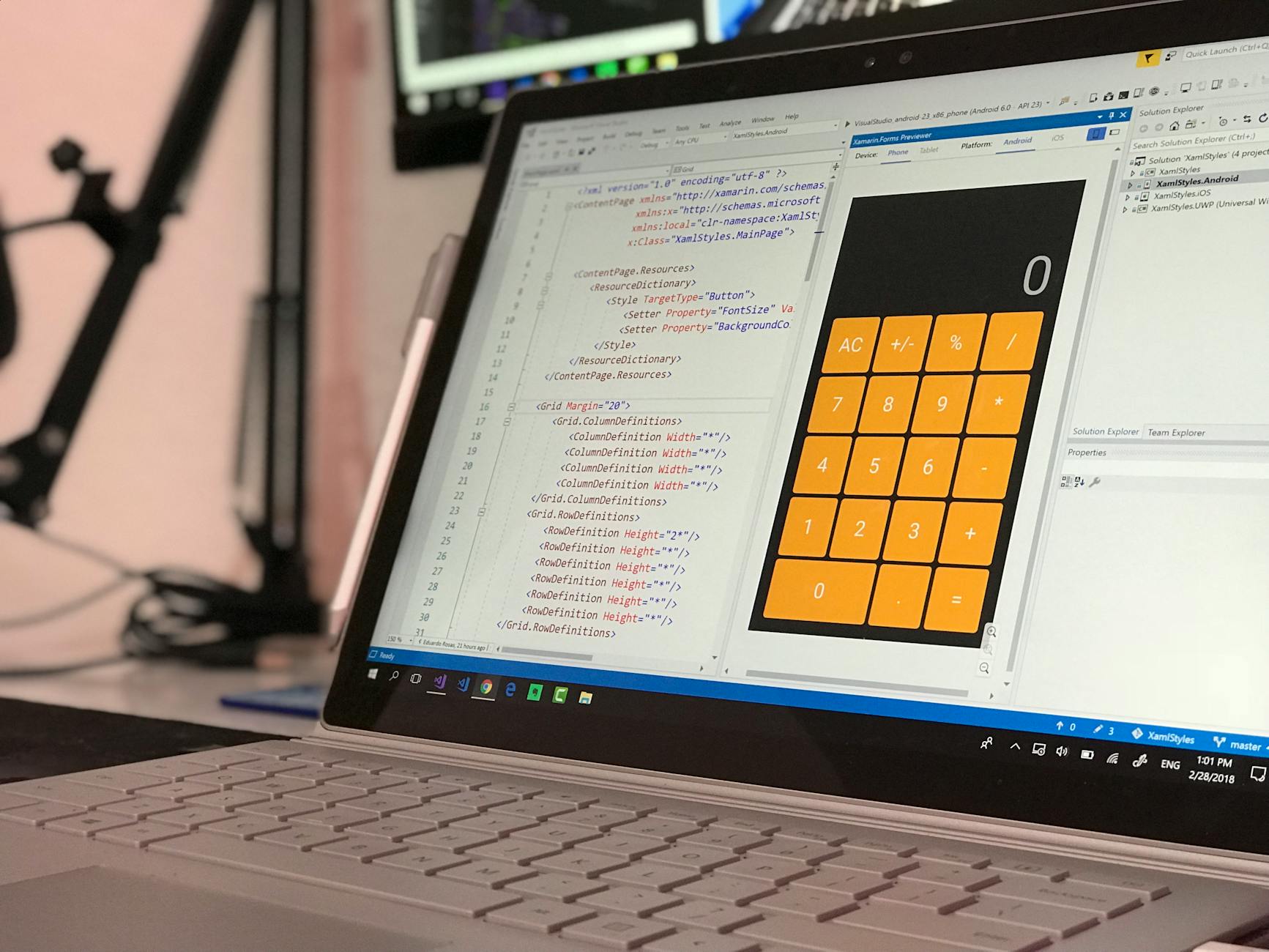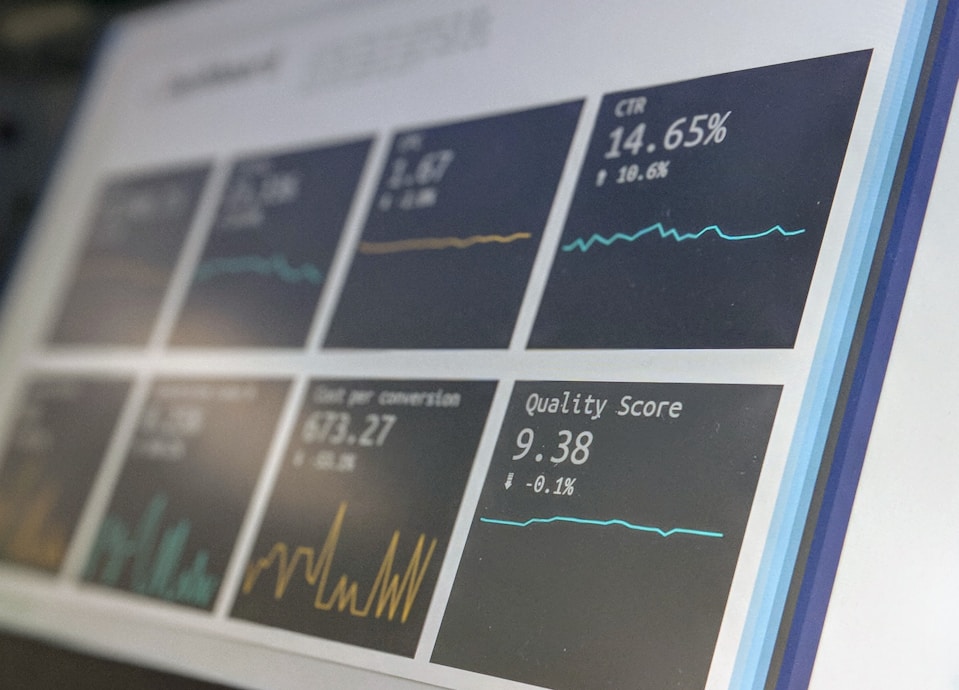What are the steps for the web development process? Whether you are a web developer, web designer, or none, in this article, we will skip the usual never-ending debate of website development being different from website design.
Irrespective of the website’s ultimate goal, be it the online business presence of a company or a web application, the steps of the building process are relatively the same.
If well-executed, a good procedure of website development will help you to effectively create any type of web page, with successful user traffic, good user experience, and high retention.
In this blog post, we’ll explore the flow of developing a website, including its key stages, and find out what team you need to leverage effective web page development. Hopefully, by the end of this article, you’ll not only have a clear idea of a step-by-step process but also understand how each of these steps contributes to the success of your website development endeavour.

What Is the Website Development Life Cycle?
Before jumping to the details of website development steps, let’s briefly take a look at what the website development life cycle is and what it commonly consists of.
The software or website development life cycle is the methodology or a standard that guides you in the right direction to build a high-quality solution. It can be referred to as an outline of what should be done to complete the project.
Learn more about the Popular Software Development Methodologies
We know that there are varieties of what a standard website development process should be. However, there is a general expectation of guidelines to be adopted for success in the development life cycle of any given website.
Based on user value, our focus in this article is the website development checklist that will help to deliver a high-quality website.
Project Estimates
Watch our webinar to learn about the practical ways to evaluate your software project estimates.
The Prerequisite: Zero Step to the Web Development Process
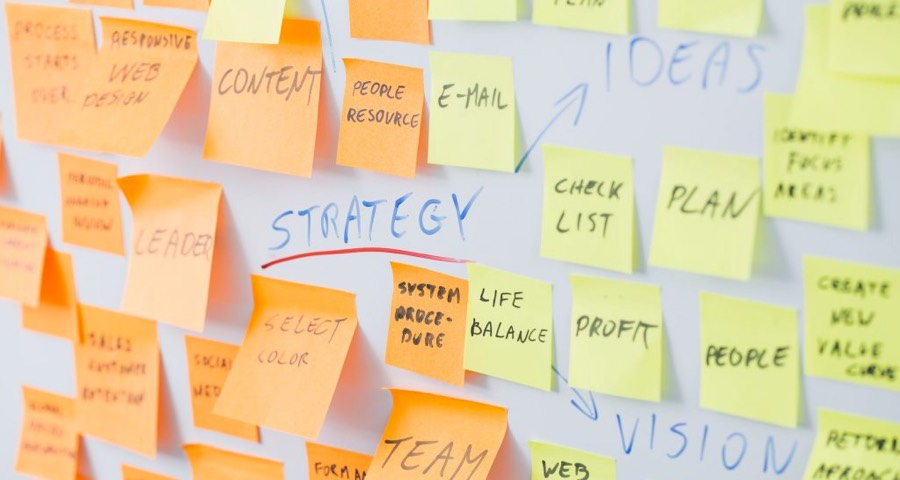
Research and Discovery
We have named this stage the prerequisite because of its importance. If the project details are not clear at this early stage, then there can be no proper planning. This might lead to missing the ultimate goal of the website or cause changes that result in an extended timeline and budget.
User-Driven Approach
Watch our webinar and learn the top ways of reducing poor user satisfaction, low adoption rates, and decreased loyalty.
At this stage, the initial research efforts in the project definition and some general consultations are vital for clarity. These could be in the form of a project discovery session where lots of questions and clarifications are made. Your needs as a client must be well understood by the development team.

During the research and discovery phase, it is important to define web development strategies that work best for you and consider the following factors with respect to their impact on the project:
Purpose
Of what use will the site be? Will it give information, simply sell a product, provide a service, or promote it?
Target Audience
This factor will determine the choice of design and style for the website.
Content
What kind of information or service will be provided by the website to its target audience?
A website’s content, purpose, and target audience will affect the choice of technologies and what functionality will be of advantage. Plus, all of that might also impact the way you approach the steps in developing a website. Not to a great extent, though.
The Steps of the Web Development Process
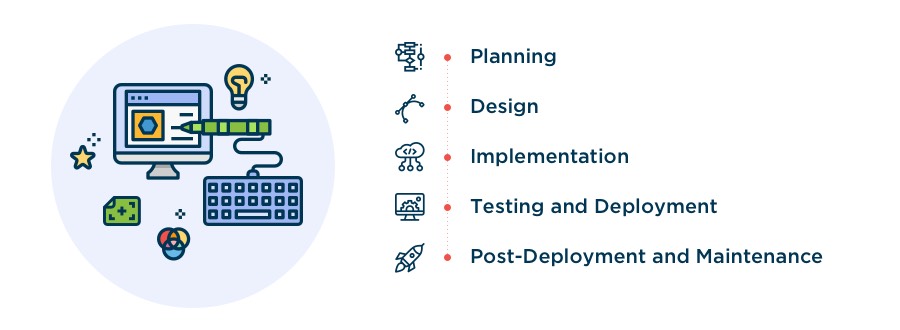
There are several ways to kill a bird, but there is always the best way to do it. Ever thought about the most appropriate way of developing a website? Below are the most essential phases of a web development process that can ensure a professional level of website creation.
Planning
“Our goals can only be reached through a vehicle of a plan, in which we must fervently believe, and upon which we must vigorously act. There is no other route to success.”
— Pablo Picasso, painter
Your development team will never get to this step if they don’t understand the purpose and needs of your project. The results from your discovery sessions, backed by analysis and research, will equip you with a roadmap for successful web development.
Planning is the stage of choosing the technology stack and software development methodology, defining the deliverables, and estimating the timeline and resources to complete the project.
Other sensitive decisions include creating the content structure and sitemap, wireframing, and planning the layout, including UI and UX design.
You should consider that deciding on a sitemap during the planning stage is fundamental for the whole project. It involves organizing the structure of the website, how many pages and functions will be connected based on their importance, and what content and functionality must be rolled out with the first release.
The planning stage takes place with an adequate report to you and your timely feedback or direct engagement in the process.
Tools:
- Jira & Confluence
- Asana
- Miro
- Lucidchart
- Balsamiq
- Microsoft Visio
Design
“Design is not just what it looks like and feels like. Design is how it works.”
— Steve Jobs, co-founder of Apple, Inc.
After the creation of a sitemap, developing wireframes, and planning a roadmap, it’s time to lay hands on the website design. This is where the creative UI designers come in, working by the approval of the client and the needs of the project. The wireframes are transformed into typography, color graphics, animations, buttons, menus, and much more.
The target audience is one of the key factors taken into consideration here. The design spells out how unique a website can be — and it is a factor for an enjoyable user experience. To create a good impression on a user, the web design must be fascinating.
There has to be a form of branding that relates to the purpose of the site. The blend of colors chosen for a website surely drives the user experience. Color can trigger different emotions, hence a creative way of combining it can be very effective in the design.
Research has revealed that consumers judge a product within 90 seconds of interaction, and 62% – 90% of such assessments are based on the color.
Source: WebFX
Tools:
- Figma
- Adobe XD
- Sketch
- Canva Pro
- Adobe Photoshop
- Adobe Illustrator
Implementation
“Technology is nothing. What’s important is that you have faith in people, that they’re basically good and smart, and if you give them the tools, they’ll develop wonderful things with them.”
— Steve Jobs, co-founder of Apple, Inc.
Once the design is approved by all project stakeholders, the next point of call is the development of the website itself, which is a major task. There is also a task of content writing that should ideally be completed beforehand.
Content Writing
Eventually, content is king. It is the essence of communication as it relates to the user interface of the website. It is the process of adding call-to-actions and other information related to the company, product, or service to the website. Content writing demands creative headlines, texts, and so on. Due to the importance of this task, it is a good practice to prepare all the website content just before the development.
Tools:
- Grammarly
- Hemingway Editor
- ChatGPT
- Surfer SEO
- HubSpot Blog Ideas Generator
- Sharethrough Headline Analyzer
- Copyscape
Frontend Development
This is the development of the client-side part of the website to interact with the users. The designs initially made in the early stages are transformed into special animations and effects. Functions are subsequently integrated based on the choice of technologies and tools.
Here, the frontend developers ensure responsive and friendly use of the site irrespective of the device.
Tools:
- React
- Angular
- Vue.js
- Bootstrap
Backend Development
This is the flip side of frontend development. Backend development services are essential for enabling the interaction of the user and server sides, interfacing the whole website. It is more like the engine room. The code at the backend is responsible for the server-side, database, integration of business logic, and so on, depending on the purpose of the website.
Tools:
- Microsoft .NET
- Node.js
- Python
- Ruby on Rails
- Go
- PHP
Testing and Deployment
“Software testing proves the existence of bugs, not their absence.”
— Anonymous
Just before you deploy the website to a server after the development, there should be a sequence of rigorous, meticulous, and repeated tests to prove the elimination of bugs. So the next one of the web design process steps is quality assurance, where the QA team tests for functionality, usability, compatibility, performance, and so on. You must have a well-functioning site.
Everything must run smoothly without a glitch. Your team must test all the scripts, ensuring that the site loads and displays perfectly on all devices and platforms. The importance here is to prove that the website is market-ready and can be released. Comprehensive testing reveals future improvements that can be made to upgrade the website.
Lastly, depending on the use of the website, your development team may need to include some fine-tuning details. This is to optimize its functionality and performance. This final touch might include plugin installations, on-page Search Engine Optimization, and page speed optimization.
If the coast is clear and the quality assurance team gives their approval, the website is then deployed to a server.
Tools:
- TeamCity
- JMeter
- PHPUnit
- Selenium
- Jest
- Cypress
- GitLab CI/CD
Post-Deployment and Maintenance
“Every feature has some maintenance cost, and having fewer features lets us focus on the ones we care about and make sure they work very well.”
— David Karp, founder and former CEO of Tumblr
There is still more to be done after deploying a website. Its maintenance, general updates, or even adding new features are unavoidable and might be included in your web development lifecycle. This can be facilitated by collecting feedback from the end-users of the website.
The essence of maintenance as the final stage is to continually support and enhance your project. At the same time, it will put your mind at ease that you are not left alone even after the project has been handed over.
What Team Do You Need to Develop a Website?
Since the web development life cycle consists of various parts of the work that we discussed above, it involves a diverse team of professionals to help you reach the end goal.
Read about the Reasons to Outrsource Web Development
Make sure your team includes a Business Analyst and Project Manager to research and examine your business requirements, control the process, and coordinate communications between all project stakeholders.
It’s hardly possible to create a good website without an experienced UI/UX designer who is responsible for how your final product will look and feel. Another important team member is a QA Specialist who will ensure your website works fine and doesn’t have any issues affecting its productivity or user experience.
No doubt, the key players you have to take on board are frontend, backend, or full-stack developers. Let’s briefly delve into the differences between these professionals who bring the website layouts to life.
Lack of Developers
Find out how to deal with the lack of IT talents without compromising project delivery.
Frontend vs. Backend vs. Full-Stack Development
Frontend developers turn the layouts and design ideas into reality, making them interactive with the use of HTML, CSS, and JavaScript. They make sure all the visual elements work well when a user communicates with a website.
On the other hand, there are backend developers who are in charge of what’s going on behind the scenes. They leverage programming languages like Python, Java, or PHP to enable the interface, server, and database to run seamlessly together.
When web programmers master both skillsets, they become full-stack developers. It means that they can take care of the front- and backend sides simultaneously, which might lead to reduced project time and cost.
In a Nutshell
It takes more than just coding to build your presence online or create a web application. The process consists of many essential phases to follow in order to come up with any type of effective website.
Consider that every website development step is significant, no matter how small or big the project is. Knowing these steps helps you stay aware of the entire website design and development process and understand why and how things get done. On top of that, it gives you control over the project.
Velvetech is staffed with experienced developers, analysts, project managers, and QA engineers who can ensure a successful website or web application development. Our business approach and project management methodologies enable us to timely deliver full-cycle development projects with further technical support. Contact us today for your websites and web applications.










